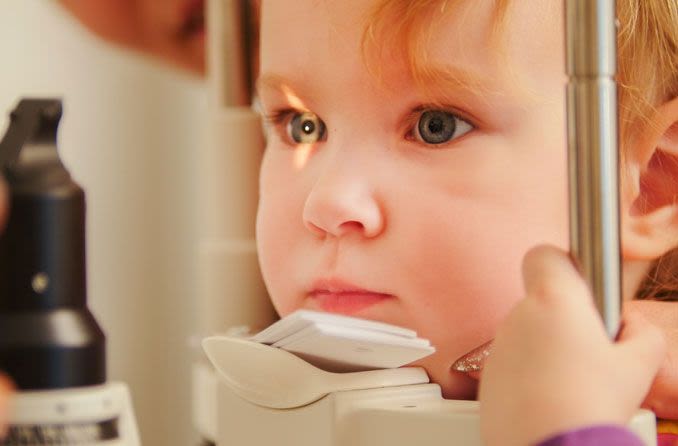What causes nearsightedness (myopia)?

The exact cause of myopia is not fully understood. However, the mechanics of the eye that cause blurry distance vision are well known. It's what causes small variations in these mechanics that researchers are still exploring. Experts do know that environment and genetics are two important factors.
People with myopia (shortsightedness) have blurry distance vision but clearer eyesight up close. This is mostly because their eyes grew a little too long from front to back during childhood.
It can also be that their corneas became too steeply curved or, in rare cases, that the cornea and lens are too close to each other.
Each of these tiny variations can cause light entering the eye to focus in front of the retina. But light needs to focus directly on the retina for clear vision at all distances.
Fortunately, experts have found a number of factors that contribute to the onset and progression of myopia.
Genetics
Researchers have identified more than 200 refractive error or myopia-prone genes. Myopia can pass from one generation to the next along with these genes.
If one parent has myopia, the chances are three times greater that their children will develop myopia. If both parents have myopia, the chances are six times greater.
Time spent outdoors
Spending enough time outdoors is one of the most important lifestyle factors in myopia development. This is because it is often the most easily adjustable factor for many families.
Research has linked spending more time outdoors in natural daylight with:
Reduced risk for myopia development
Reduced progression of myopia to higher levels
READ MORE: Is myopia more genetic or environmental?
Vision habits
Certain vision habits can also cause or influence nearsightedness. The most significant of these habits is focusing up close for consistent, extended periods of time.
This includes:
Reading
Using a computer
Looking at a smartphone or tablet
Myopia progression usually stabilises during early adulthood. But the habits children and adolescents establish before then can worsen myopia.
To reduce a child's risk of developing myopia and potentially slow the progression of existing myopia, parents should:
Encourage more time outdoors in natural sunlight
Encourage regular breaks during focused near work
SEE RELATED: Is your child at risk for myopia?
Early detection
Detection of myopia in early childhood is very important. Some children who develop myopia at a young age can go on to develop progressive myopia, which can reach severe shortsightedness, called high myopia.
High myopia can lead to serious eye problems later in life, including:
Myopic macular degeneration
But if myopia is detected early enough, myopia control strategies can slow myopia progression during its peak years.
Not all children with myopia will have obvious symptoms. So it's extra important that all children have eye exams at 6 months and 3 years old, and every year throughout school.
Ask your child's optometrist about lifestyle factors and other available myopia control strategies.
READ MORE: Why myopia progression is a concern — and what you can do about it
Adam Debrowski also contributed to this article.
IMI – Myopia genetics report. Investigative Ophthalmology & Visual Science. February 2019.
Early childhood refractive error and parental history of myopia as predictors of myopia. Investigative Ophthalmology & Visual Science. January 2010.
Role of genetic factors in the etiology of juvenile-onset myopia based on a longitudinal study of refractive error. Optometry and Vision Science. June 1999.
Time spent in outdoor activities in relation to myopia prevention and control: a meta-analysis and systematic review. Acta Ophthalmologica. March 2017.
Significance of outdoor time for myopia prevention: a systematic review and meta-analysis based on randomized controlled trials. Ophthalmic Research. March 2020.
Vision development: childhood. American Academy of Ophthalmology. August 2020.
Page published on Thursday, 27 June 2019
Page updated on Tuesday, 28 March 2023
Medically reviewed on Thursday, 3 March 2022






